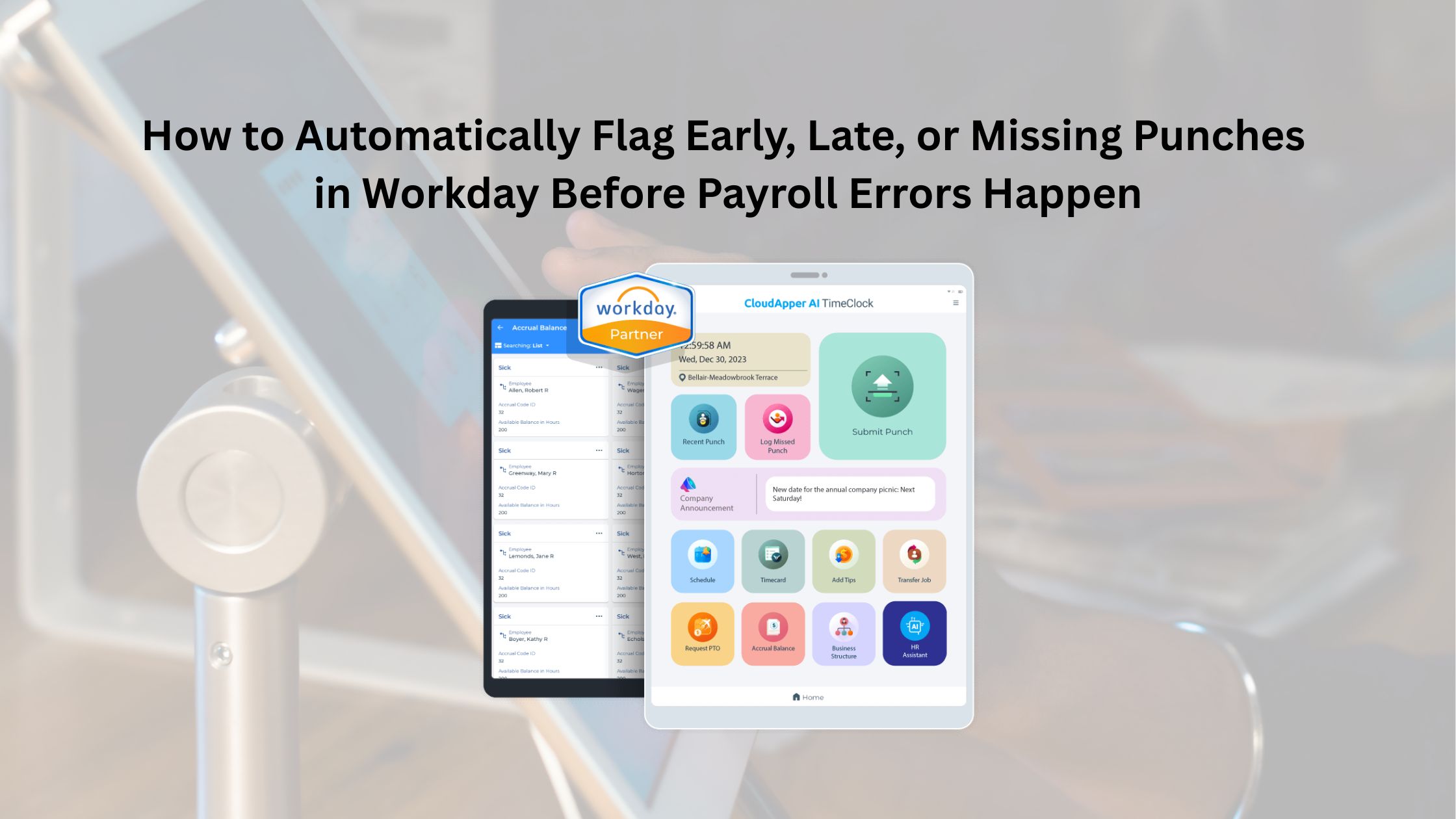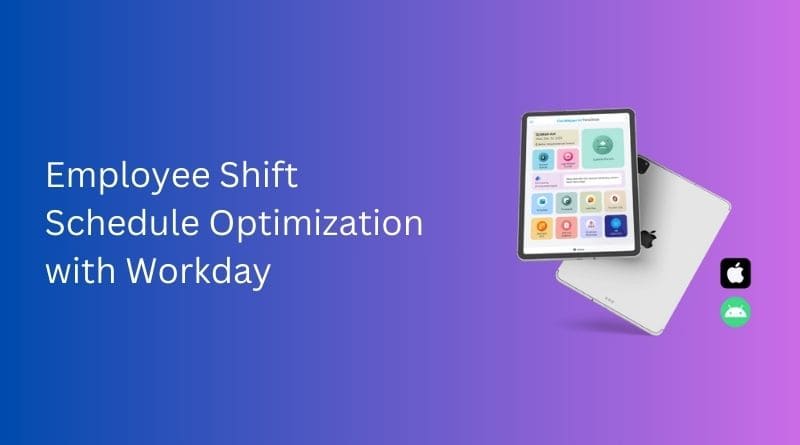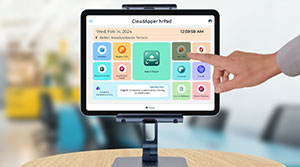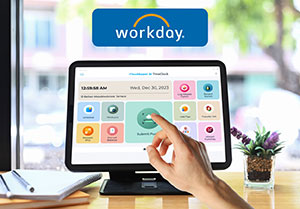Say goodbye to scheduling chaos! CloudApper AI TimeClock, integrated with Workday, offers data-driven insights and intelligent shift management. Empower your workforce with optimized schedules for enhanced productivity and work-life balance. Revolutionize your approach today!
Table of Contents
Managing a large workforce and creating optimal shift patterns can be a never-ending conundrum. Finding out which employees will be absent at the last minute, which employees will be working overtime, or which employees are usually inconsistent with their shifts and managing all of this manually leads to chaos. On the other hand, inconsistent schedules cause employee dissatisfaction weariness, and, eventually, a decrease in productivity. Schedule optimization using a Workday TimeClock, such as the CloudApper AI TimeClock, could be the missing piece here. CloudApper integrates seamlessly with your existing Workday system, giving you an effective way to optimize schedules that benefit both your employees and your company.
For more information on CloudApper AI TimeClock visit our page here.
Key Takeaways:
- An optimized shift schedule enhances employee retention, improves productivity, reduces labor costs that come with over and under-staffing, increases customer satisfaction, and ensures compliance with labor laws.
- A Workday Time Clock like the CloudApper AI TimeClock can help optimize shifts with shift bidding, swapping, and confirmation features.
What is Schedule Optimization?
Schedule Optimization refers to the process of optimizing employees’ work hours in such a way that there are no occurrences of understaffing or overstaffing in any shifts.
Why Schedule Optimization Matters for Your Large Workforce
Optimizing shift schedules isn’t just about convenience; it’s a strategic decision with significant benefits for your company:
Success Story
With CloudApper AI TimeClock, our employee satisfaction has increased by 65% and productivity has increased by 73%.
HR Director, a large retail chain in New York*
Enhanced Employee Satisfaction and Retention
Unpredictable schedules and lengthy hours affect work-life balance, resulting in dissatisfied and burned-out employees. As a result, employees are more likely to leave your organization, leading to high employee turnover rates. An optimal shift plan allows you to consider employee preferences and provide greater predictability, increasing employee satisfaction and reducing turnover rates.
Improved Productivity and Performance
Employees may be required to work consecutive shifts due to inefficient scheduling. This exhausts and depletes their energy, making it difficult for them to work productively. An optimized shift scheduling system ensures enough breaks while also taking into account workloads, resulting in a more focused and productive workforce.
Reduced Labor Costs
Inefficient staffing methods, such as overstaffing during slow periods or understaffing during peak periods, can have a substantial influence on your company’s bottom line. Overstaffing wastes resources. You are effectively paying for idle time, as staff with no pressing tasks may become less productive. On the other hand, understaffing at peak periods causes a different set of issues. With insufficient labor to handle the increased workload, businesses frequently rely on overtime to meet customer demands or complete tasks on time. Thus, you must rely on overtime pay, which significantly increases labor costs when compared to regular pay rates. These issues can be avoided with an optimized scheduling system, resulting in lower labor costs.
Increased Customer Satisfaction
Appropriate staffing levels are critical in customer-facing positions. If the staffing level is insufficient, clients will have to wait longer than usual to receive service, resulting in customer dissatisfaction. By optimizing your employees’ shift schedules, you will have enough staff on each shift and your customers will receive their service on time. This results in an amazing customer experience and high customer satisfaction.
Compliance with Labor Laws
Labor rules require breaks, maximum working hours, and rest intervals between shifts. By properly optimizing your employees’ schedules, you can build schedules that meet these laws while avoiding legal complications and fines.
CloudApper AI TimeClock: Your Partner in Schedule Optimization with Workday
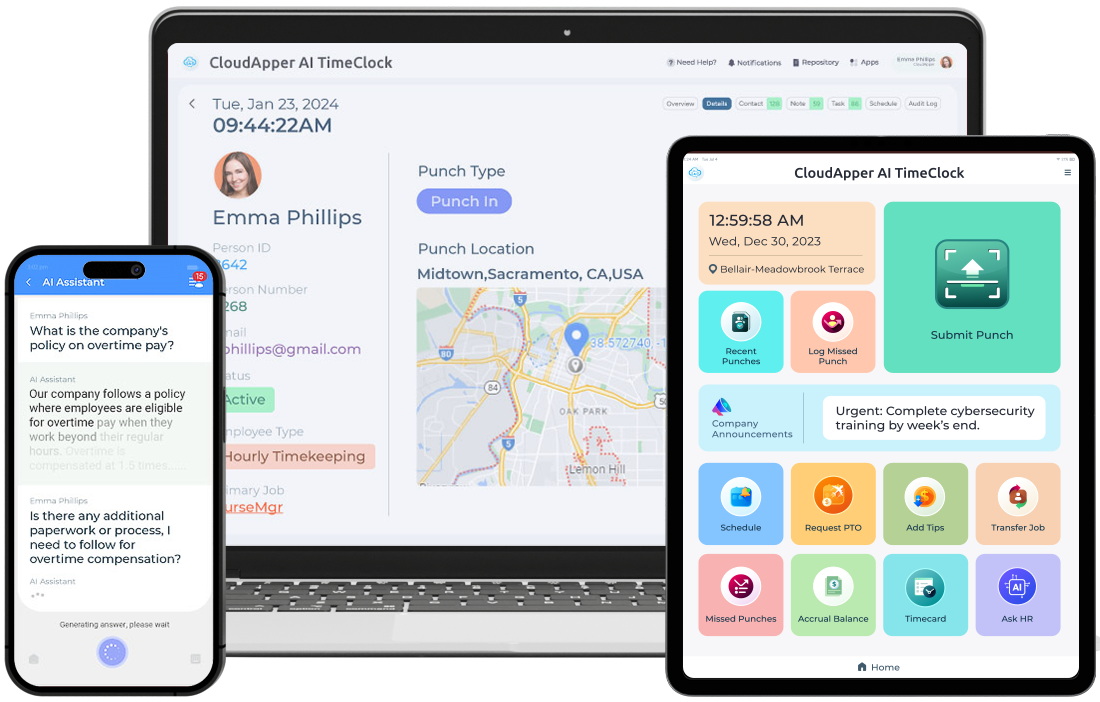
CloudApper AI TimeClock goes beyond simply capturing employee time data. It empowers you to leverage that data to create optimized schedules that address your specific needs. Here’s how:
Data-Driven Insights
CloudApper AI TimeClock, which is integrated with Workday, captures detailed time data, including regular hours, overtime, breaks, and even job transfers. This data provides a goldmine of information about historical workloads and employee availability. By evaluating this data, you can uncover staffing patterns and estimate future demands, allowing you to make more informed scheduling decisions.
Shift Swapping
CloudApper allows employees to request shift changes and swap shifts with coworkers. This allows employees to have some choice over their schedules while yet providing enough staffing coverage. You can even set approval workflows and receive notifications when swaps are proposed.
Employee Skill and Availability Matching with Intelligent Shift Bidding
When integrated with Workday, CloudApper AI TimeClock enables employees to bid on open shifts. When they bid on open shifts, CloudApper selects the best-fit employees based on their skills, previous work hours, and experience. But it doesn’t end there; you can also specify your predefined criteria, and the AI TimeClock will choose employees based on those criteria.
Shift Confirmation
Clear and transparent communication is essential. CloudApper AI TimeClock provides shift confirmation notifications to your employees via email/SMS at a predetermined time before each shift begins. Employees can confirm their attendance for that specific shift by simply responding to the notification. This gives you time to look for replacements, or you can simply publish an open shift on the CloudApper AI TimeClock and let your employees bid for it using the above-mentioned process.
Conclusion
Don’t let unoptimized schedules hold your workforce back. Schedule optimization with Workday TimeClock like the CloudApper AI TimeClock can revolutionize your approach to shift scheduling.
So, if you want to efficiently optimize schedules for your workforce and ensure a good work-life for them, contact us today.
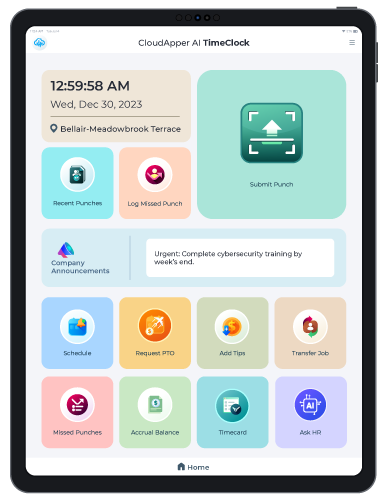
FAQ: Employee Shift Schedule Optimization with Workday TimeClock
Q1: What are the benefits of schedule optimization?
The core benefits of schedule optimization are increasing employee satisfaction and productivity. It also helps to reduce labor cost and ensure compliance with labor laws.
Q2: How to optimize employee schedules?
You can optimize employee schedules by implementing CloudApper AI Time Clock in your human capital management operations as it has an AI-powered shift optimization feature.
Q3: How do you manage employee schedules?
You can manage employee schedules by offering them the option to confirm their availability in certain shifts beforehand, keep a close look at their attendance data, and let AI TimeClock pick up and contact the best employees among your workforce for the empty shifts.
*Disclaimer: Due to privacy reasons, the identity of the person or company cannot be revealed.
What is CloudApper AI Platform?
CloudApper AI is an advanced platform that enables organizations to integrate AI into their existing enterprise systems effortlessly, without the need for technical expertise, costly development, or upgrading the underlying infrastructure. By transforming legacy systems into AI-capable solutions, CloudApper allows companies to harness the power of Generative AI quickly and efficiently. This approach has been successfully implemented with leading systems like UKG, Workday, Oracle, Paradox, Amazon AWS Bedrock and can be applied across various industries, helping businesses enhance productivity, automate processes, and gain deeper insights without the usual complexities. With CloudApper AI, you can start experiencing the transformative benefits of AI today. Learn More

Brochure
CloudApper hrPad
Empower Frontline Employees with an AI-Powered Tablet/iPad Solution
Download Brochure
CloudApper AI Solutions for HR



- Works with








- and more.
Similar Posts

When Delegation Fails in Workday: How to Submit Time-Off Requests…

Avoiding Termination Adjustment Issues in Workday: How CloudApper hrPad Supports…
